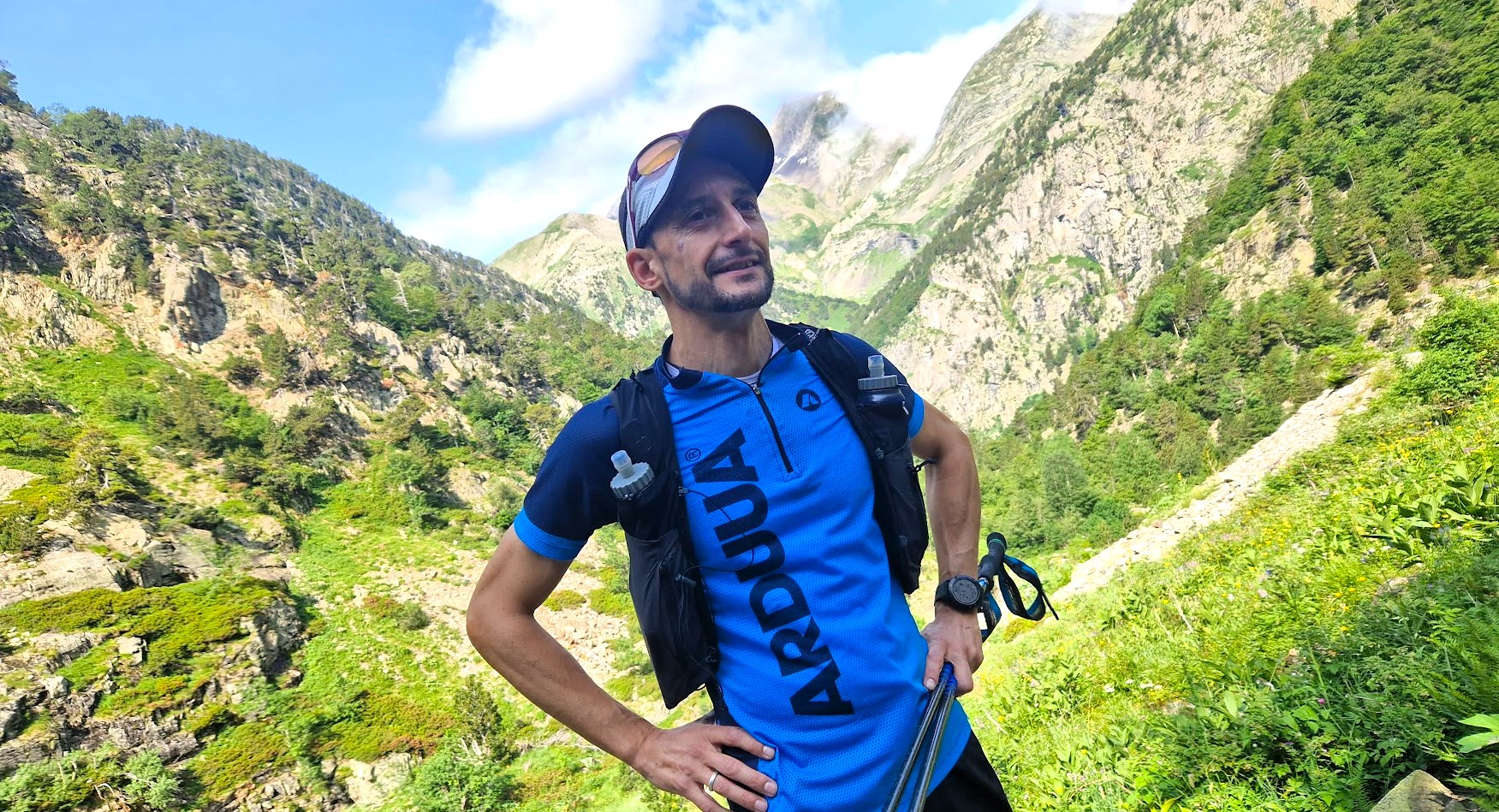Running Biomechanics: The Key to Smarter, Safer, and Stronger Trail Running
If you’re dealing with recurring pain while running—knees, hips, shins, or back—there’s a high chance it’s not just about fitness… it’s about form.
At Arduua, we believe that trail running technique matters, and biomechanics is one of the most powerful tools we use to help runners run smarter, stronger, and without pain.
Here’s a detailed look into the four phases of the running cycle, with insights from Coach David García and practical biomechanical tips to help you improve your stride, efficiency, and injury resilience.
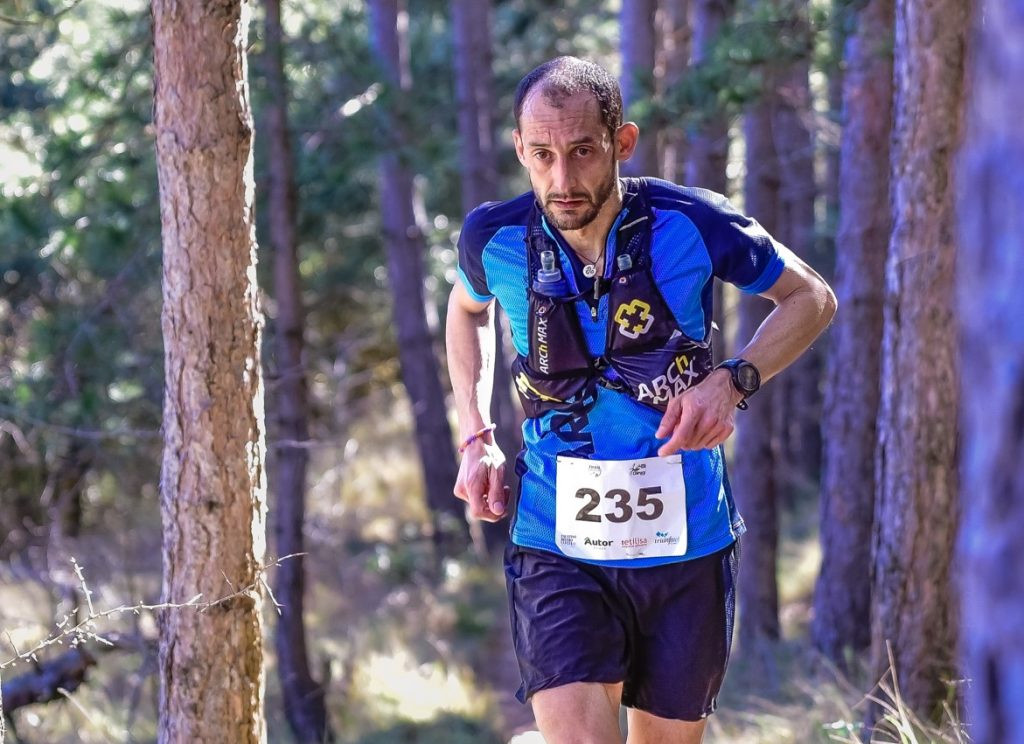
Initial Contact – How You Land Matters
David says “How your foot hits the ground could be causing your injuries.”
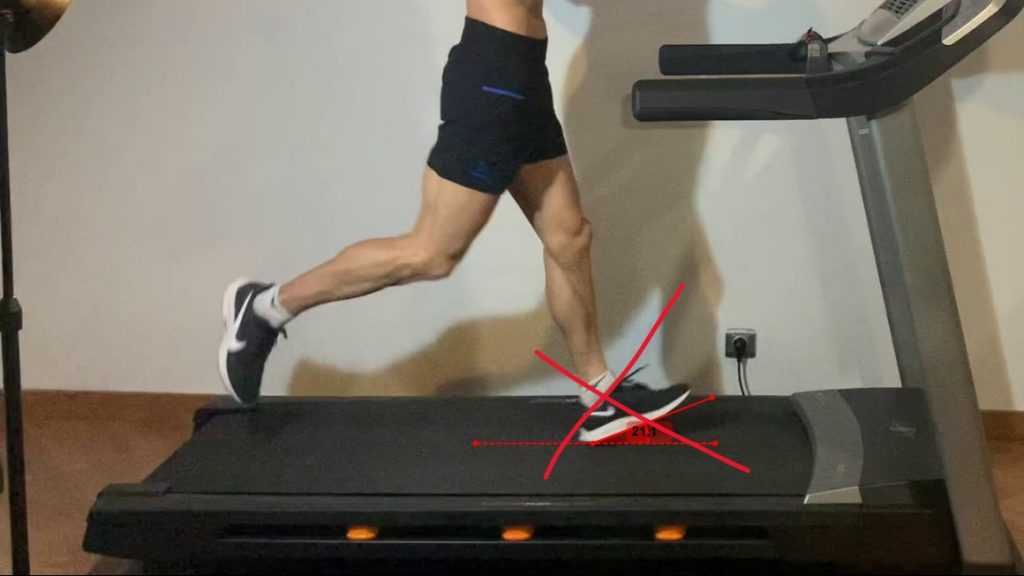
The initial contact phase begins the moment your foot touches the ground. Poor mechanics here create a ripple effect of stress throughout your body.
🔻 Common Mistakes:
- Heel-first landing = braking force + impact
- Overstriding = increased joint stress
- Locked knee = lack of shock absorption
✅ Fix It:
- Keep your knee slightly bent
- Land under your center of mass
- Run with a cadence of 170–180 steps/min
📚 Research Insight: A study by Heiderscheit et al. (2011) found that increasing cadence reduces joint loading and lowers risk of injury.
Midstance – The Moment of Maximum Load
David says: “The midstance phase is where your body absorbs the most impact. It’s the key moment to protect your joints and prevent injuries.”
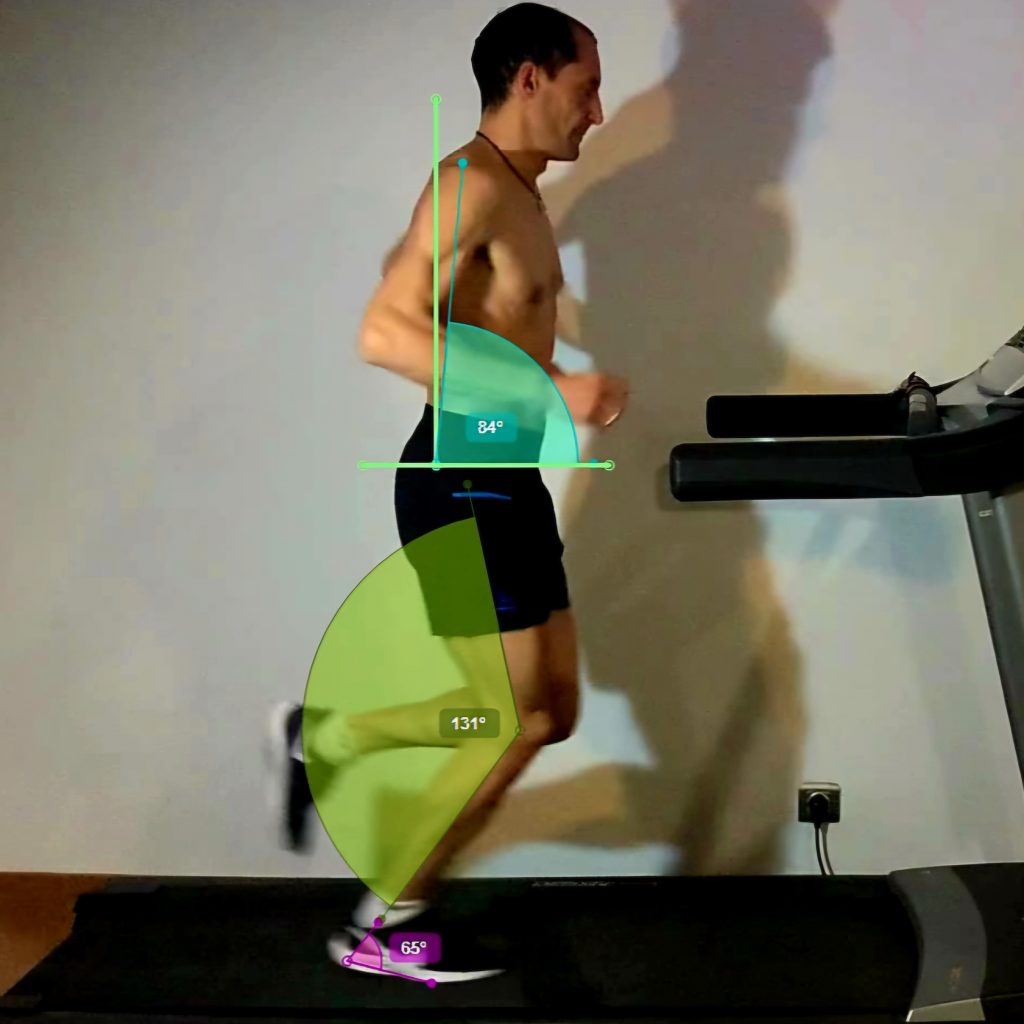
In this phase, your leg is fully loaded under your body. Stability, alignment, and control are critical.
🔻 Common Mistakes:
- Knee collapsing inward (dynamic valgus)
- Hip drop or rotation
- Overpronation increasing tibial/posterior chain stress
✅ Fix It:
- Keep knee softly flexed (20–25°)
- Maintain level hips and stacked joints
- Strengthen glutes, core, and balance systems
📚 Fun Fact: Vertical ground reaction forces can reach 3x your body weight at this phase. Proper alignment is non-negotiable.
Propulsion – Power Starts with Form
David says: “Speed is born in your push-off—but only if it’s biomechanically sound.”
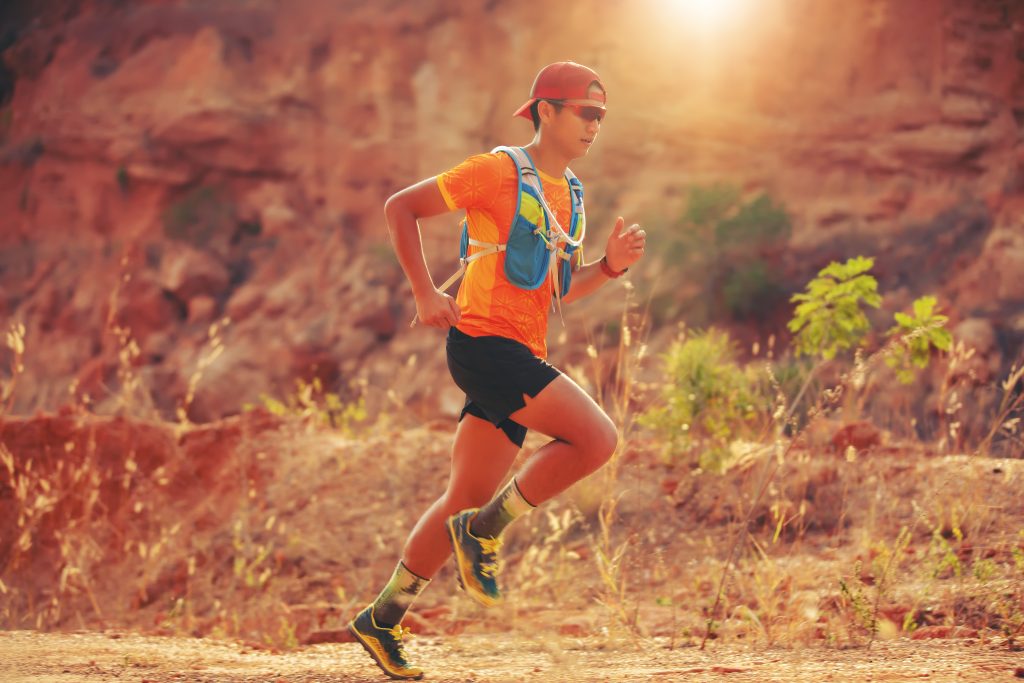
The propulsion phase is where power and momentum are generated. Weak mechanics here limit speed and efficiency.
🔻 Common Mistakes:
- Weak hip extension
- Minimal ankle drive
- Poor arm-leg coordination
✅ Fix It:
- Drive from the glutes and hamstrings
- Use plantar flexion (toe-off) effectively
- Synchronize arm swing with leg movement
📚 Tip: Elite runners have up to 10% more hip extension than recreational athletes, helping them run faster with less effort.
Flight Phase – Efficiency in the Air
David says: “When your body is airborne, every inch matters.”
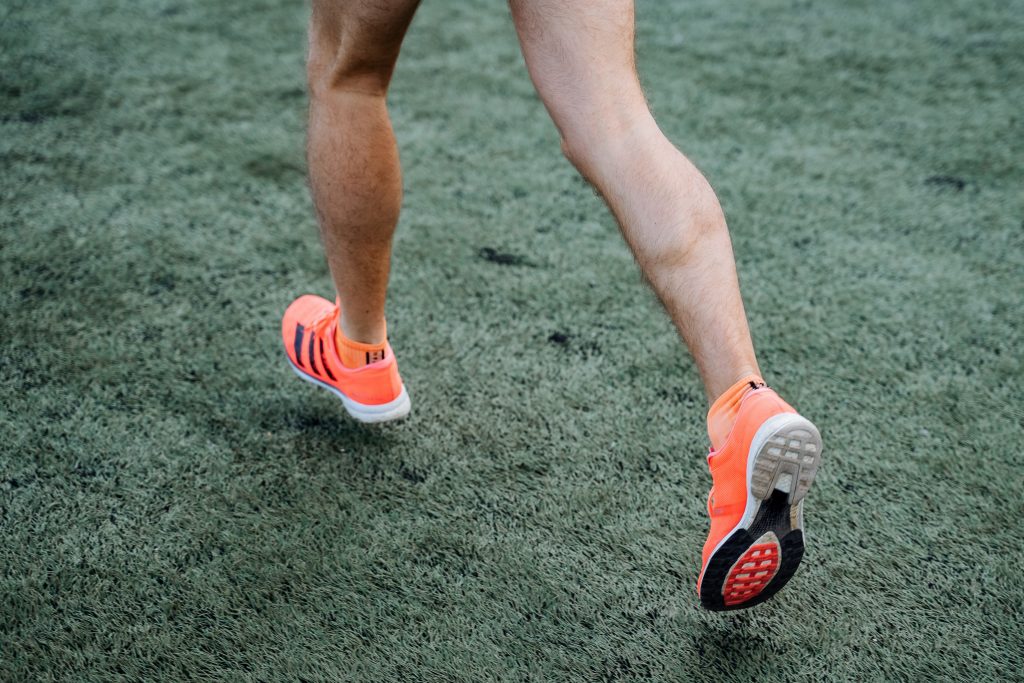
In the flight phase, poor mechanics can lead to wasted energy and poor timing on the next step.
🔻 Common Mistakes:
- Excessive vertical bounce
- Over-flexed hips during float
✅ Fix It:
- Maintain high cadence (170–180)
- Minimize vertical oscillation (<8cm ideal)
- Run with rhythm and balance
📚 Research Insight: Reducing vertical oscillation improves running economy by up to 7% (Heiderscheit, 2011).
The Running Gait Cycle – Correct Technique in Every Phase
Running is a continuous cycle of coordinated movements. By understanding each phase, you can improve efficiency, reduce injury risk, and build better running economy. Below are the five key phases of the running gait cycle:
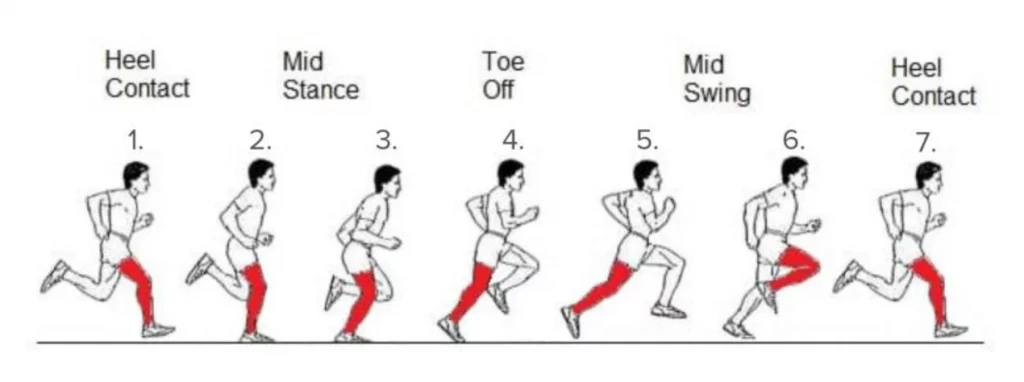
1. Heel Contact (Initial Contact)
- What happens: The foot first touches the ground, ideally under the body’s center of mass.
- Correct technique:
✅ Land softly with a midfoot (not overstriding).
✅ Knee slightly bent to absorb shock.
✅ Upright posture with relaxed shoulders.
2. Midstance (Maximum Load)
- What happens: The body’s weight is fully over the supporting leg.
- Correct technique:
✅ Knee flexed about 20–25° to allow shock absorption.
✅ Hips stable and level, no “hip drop.”
✅ Knee, hip, and ankle stacked in alignment.
3. Toe-Off (Propulsion)
- What happens: The body pushes off the ground to generate forward momentum.
- Correct technique:
✅ Strong push from glutes, hamstrings, and calves.
✅ Full hip extension and plantar flexion (toes push down/away).
✅ Arms drive in sync with legs to generate power.
4. Mid-Swing (Flight Phase)
What happens: Both feet are off the ground; the swing leg moves forward to prepare for the next step.
- Correct technique:
✅ Compact and efficient swing, no excessive lift.
✅ Knees drive forward, legs cycle smoothly under the hips.
✅ Minimal vertical bounce — energy directed forward.
5. Heel Contact (Cycle Restarts)
- The cycle returns to Initial Contact, beginning the next stride. The goal is rhythm and repeatability — smooth, controlled, and efficient.
✅ Key takeaway: Efficient running is not about perfection in one phase, but about fluid transition through all phases, keeping posture tall, cadence high (170–180 steps/min), and movements balanced.
Why Biomechanics Matters for Trail Runners
Trail runners face uneven terrain, steep gradients, and prolonged strain. Biomechanical flaws that might be tolerable on flat roads often become major problems on technical trails.
Common injuries linked to poor biomechanics:
- Runner’s knee (patellofemoral pain)
- Achilles tendinopathy
- Plantar fasciitis
- Shin splints
- Hip instability or SI joint pain
Fixing your mechanics not only prevents injury but also boosts your efficiency, confidence, and endurance in the mountains.
Ready to Train Smarter with Arduua Coaching?
Biomechanics is just one part of what we do at Arduua. If you’re ready to level up your trail running with personalized coaching, structured training, and expert guidance tailored to your goals—we’re here to help.
📲 Sign up for Arduua Trail Running Coaching here: https://arduua.com/trail-running-coach-online/
Get Assessed – Book Your Running Biomechanics Analysis
At Arduua, we offer Running Technique & Biomechanics Assessments Online, led by Coach David García. Whether you’re a beginner or elite, we’ll break down your form and provide you with a personalized, science-based improvement plan.
📲 Book your assessment: https://arduua.com/running-technique-biomechanics-analysis-online
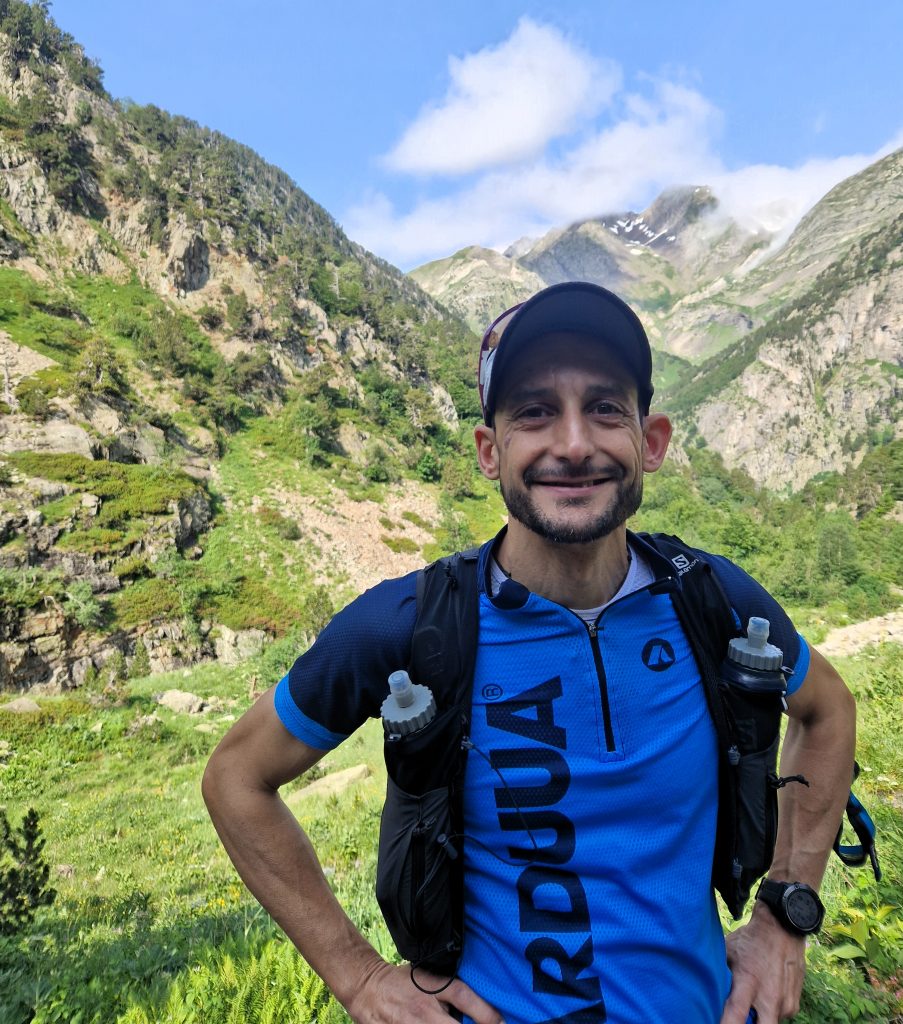
Final Words from Coach David
“Running without pain is possible. Don’t wait for injury to force you into change. Understand your form, train with intention, and give your body what it needs to thrive.”
Welcome to the Arduua Tribe. 💥
Where the Magic Happens.
/David Garcia, Arduua Trail Running Coach


